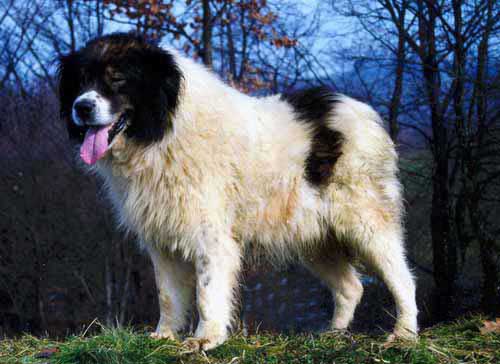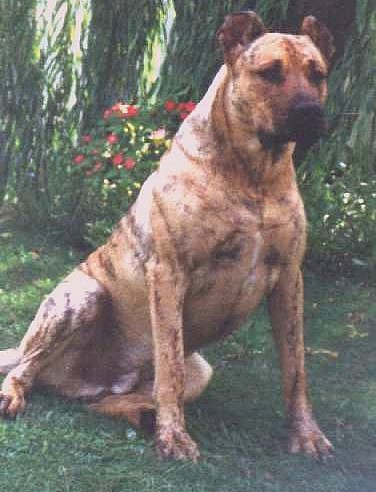FCI adds four breeds to official list... and more
Today was the second day of the General Assembly, the General Assembly of the FCI. Almost by tradition it takes a while before the outcome becomes clear, but slowly there are messages about the decisions.
For example, the FCI chooses relatively "safe" countries for the forthcoming World Dog Shows, in 2021 this will take in the Czech Republic (Brno), in 2022 in Brazil. Although Brazil is sometimes uneasy, and the Czech Republic has a bad name in puppy mill breeding, both countries will be less sensitive than China in 2019. The WDS in 2020 had been forgiven to Spain, Madrid earlier. Other candidates like Ireland id not win the bid.
In addition, the FCI has added four new races, at least four national races as official breed. It is about the Cimarron Uruguayo, the Tornjak, the Russian Toy and the Polish hunting dog.
The Russky Toy is a small breed, and has been added in group 9, companion dogs. The dog is 29 cm. high and weighs about three kilos. Short-haired or smooth-haired, sometimes with long hair and light curl. Originated in the 1950s, as a successor, but not directly from, the English toy, which was very popular in Russia in the early 20th century. Official colors are: Black and Tan, Brown and Tan, Red, Red & Sable (Brown Sable or Red Sable). Remarkable feature is the long flags of both upright ears with the long hair variant. The recognition does not seem to be completely flawless, a Russian judge has already announced that one of the most common colors is not in the new standard.

The Tornjak is a dog breed that originates from Bosnia and Herzegovina. It is a shepherd dog, also suitable as a mountain dog. The variety already existed in the Middle Ages, some documents even dating back to the 9th century. A mature male is about 68 centimeters high, an adult bitch about 63 centimeters. Due to its size and origin no breed for apartment living. Rather an "outdoor breed" that requires at least a very large garden. Added to Group 2, Section 2.2, Molossers.

The Cimmaron Uruguayo is a big, fox-like-type dog. It is a balanced, intelligent and very brave dog. The dog is suitable as a sheepdog, in the game of big game or for surveillance. A mature male reaches a shoulder height of 58 to 61 centimeters. An adult bitch reaches a height of 55 to 58 centimeters. The weight of a male is between 38 and 45 kilograms, that of the bitch between 33 and 40 kilograms. The coat has short soft hair with an undercoat. The Cimarron Uruguayo is derived from European dogs brought by early colonizers and released or left behind. The dogs adapted to living in the wild in Uruguay, and over time they became rather numerous as well. In the eighteenth century it resulted in attacks on cattle and even people. The dog was then hunted, with premiums being paid by the government for each killed dog. However, there remained a lot of these dogs, especially in the highlands of Cerro Largo. Ranchers in the area would catch and tame the dogs, and use them as watchdogs. The survival story and the fierceness of the Cimarrón have made it a national symbol in Uruguay, and the breed is the Uruguay National Army's mascot. Subdivided into group 2, section 2.1.

Lastly, the Gonczy Polski, also known as Polish hunting dog. The Gończy Polski, like his related Ogar Polski, belongs to the braques or running dogs. But it is clearly smaller and lighter. The Gończy Polski is a robust dog. The male reaches a height of 55 to 59 centimeters, the bitch stays smaller by 50 to 55 centimeter. The weight ranges between 22 and 26 kilograms. After the first world war, the Polish hunting dog was still used for hunting in Poland in the eastern regions, but especially in the mountains in particularly difficult areas. In the Podkarpacle region, the famous Polish cynologist Jozef Pawuslewicz (1903-1979) used this type for hunting. He wrote the first breed standard and because of his efforts, the breed was officially registered by the Polish Kynological Association, and thus by the FCI. Subdivided into group 6, section 1.2.
The FCI has also expanded its members, Pakistan, San Marino, Turkey and Bahrain became full member, Armenia, Bosnia and Herzegovina, Kirghistan and Vietnam became associate member, thus without voting rights. Bolivia and Sri Lanka withdrew their appliances for full membership, the Montenegro membership was not approved by the FCI board.
Whether or not Hong Kong is still a member, a proposal to withdraw HK,was submitted by Moldova and Latvia, is not yet known.
The amendment to the articles of association has not been finalized. The Italian Kennel Club ENCI announces through their President that: "The current ENCI delegation has promoted improvements to the design of the new FCI Statute in question. In particular, ENCI has worked to integrate the concept of animal welfare into the selection of breeders of These comments (from the ENCI, Red.) led to a spicy confrontation, which took several hours, with all representatives from different countries calling their own vision, often a sensitive subject, certainly for certain countries. At the end of a long and fruitful discussion it has been decided to postpone this to a subsequent extraordinary general meeting, which only deals with the amendment to the articles of the association statutes". According to Italy, the subject is too important for a hasty discussion. . To what extent this also concerns other statutory changes is not clear, but according to sources it concerns all changes. Many changes were submitted by the Norwegian Kennel Club, in an effort to make animal welfare so important that the FCI should also take action against China. Although the course of the discussions is not known, this could certainly have been a serious debate. The extraordinary meeting is likely to be held in Belgium, no date yet known.
Source and pictures: Wikipedia



